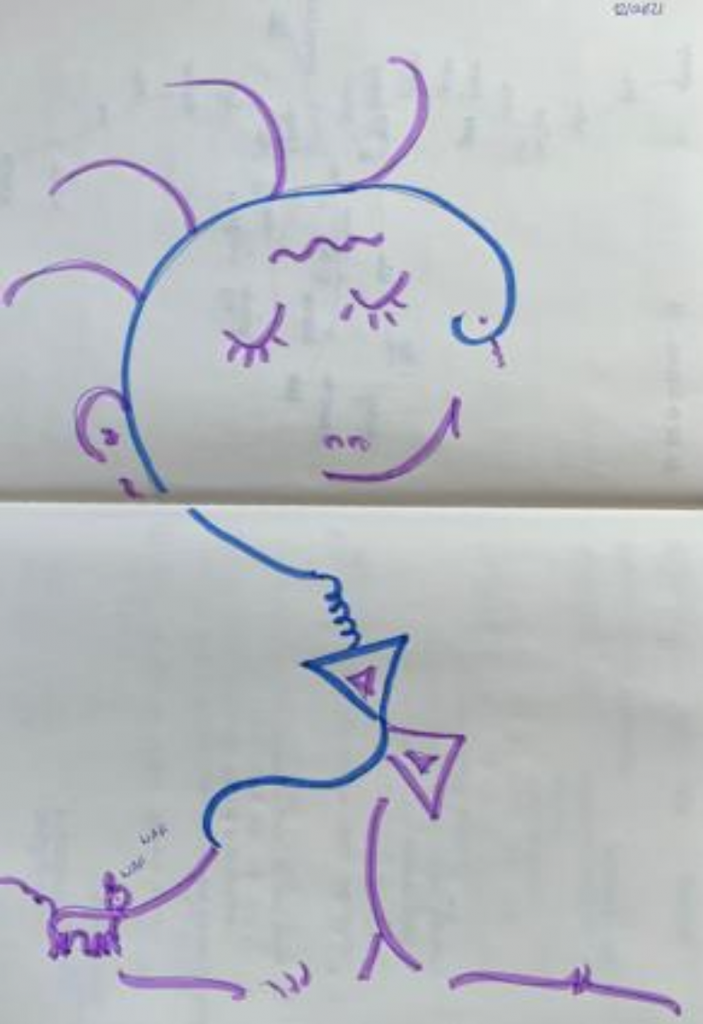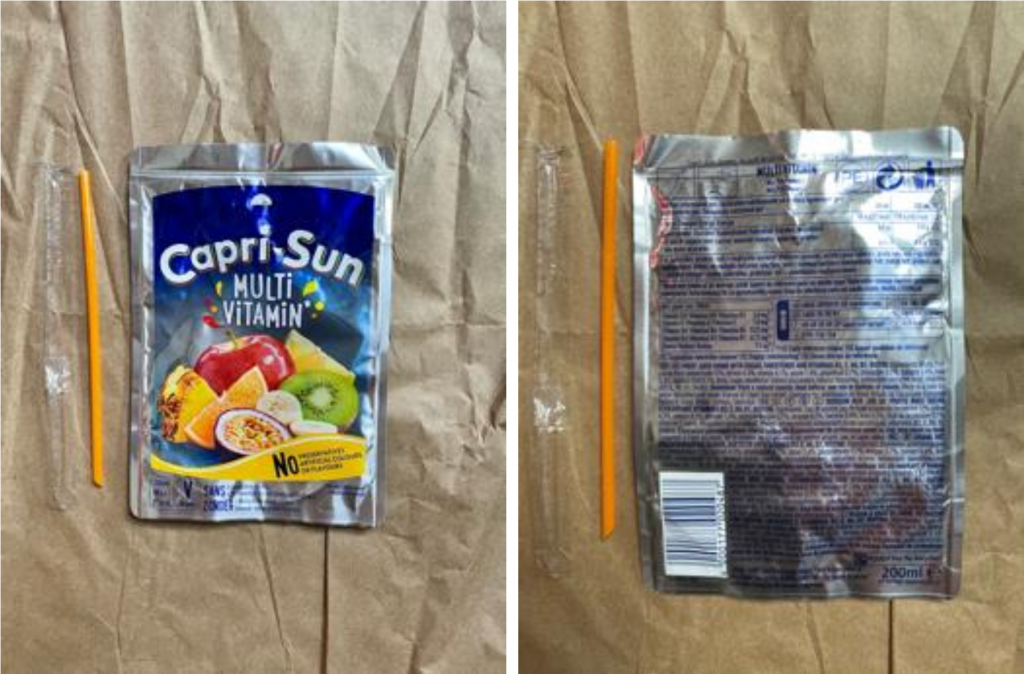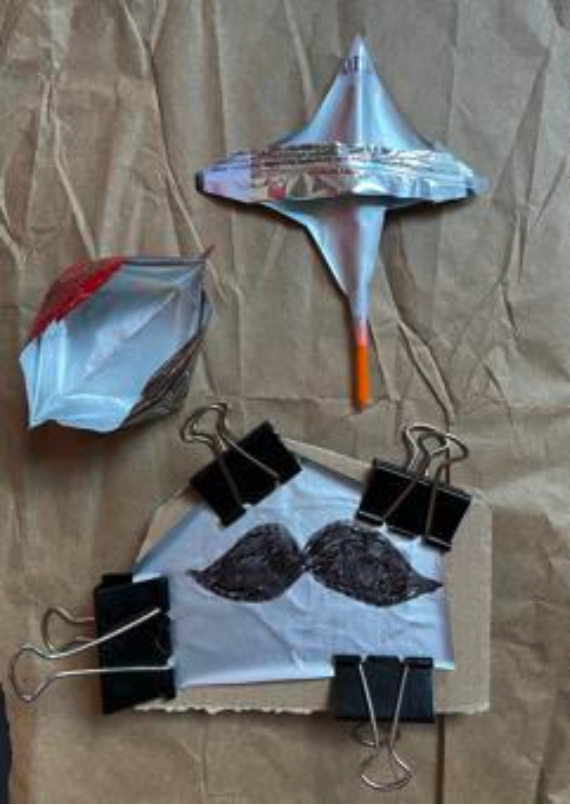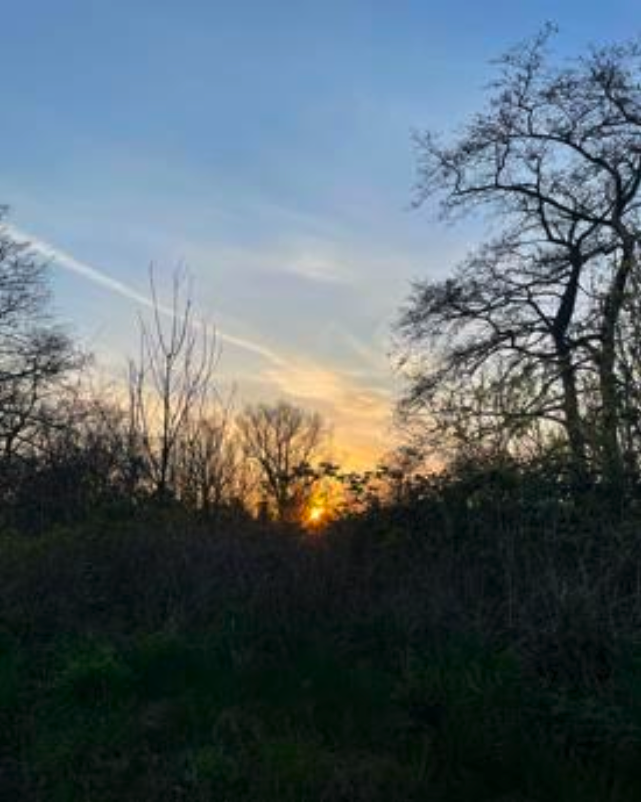From Trash to Treasure
Assignment on Dialogue:
Proposition for four participants, for one week, forever.
Report by Lonneke Mertens, student in Master of Art Education in Groningen.
Executed by: Kaia, Gamin, Monica, Lonneke

Instructions:
On Monday:
1. Go outside, take something from nature.
I took something which irritates me when left outside: a fruit drink package (Fig. 2). I found it while having a morning walk with my dog.

2. Take the object home and start a dialogue with three other people about the object.
Share what the object means to you. Invite the other participants to share their thoughts on your object and your story too. Continue with the other three participants’ objects and stories. By having this conversation, meaning is added to the objects by the other participants.
On Tuesday
3. Research the potential of the object.
For instance it can become another object, multiple objects, but also the beginning of a process or a ritual. I decided to make some new objects ‘presents’ for the other three participants. Out of the silver plastic package (the inside of the package has a silver coat), I made a moustache, a kite and a shoe for the branch (Fig. 3).

The three objects made for the participants combined in the drawing we made together on the first day for the dialogue assignment from Monica (Fig. 1 and Fig. 4). Through a few steps it became a nostalgic beach memory to me, from my childhood with my parents and sister in good times. Monica and I had a Whatsapp chat about the process. Monica saw a dog with a kite in it. By sharing what you make, new meanings are added.

On Thursday
We did not meet. I had a funeral.
The nostalgic memory from the past, connected with the funeral/memorial I had on that day for a ninety-year old aunt. I had thoughts about my relationship with the four aunts who contributed in different ways to my childhood. The beautiful poems from my vulnerable uncle (her husband), which are recited on the funeral, were about the ‘future’ and about ‘hope’. They have a big family, with even a couple of great-grandchildren. When somebody dies it is sad, but life and family stories will continue with new members of the family, Kaia said. That was made clearly visible on this day. When getting home in the evening, I took a walk and took this picture (Fig. 5).

On Friday
4. Sharing experiences.
On Friday we shared our experiences with our objects and added meaning to them. I shared the story about the funeral of my aunt, the poems and the family. I also shared with the participants the photo I took at the end of the day during my walk. Kaia said she felt the story through this picture. Monica connected the sun to the Capri-sun on the fruit drink package (Fig. 1) and my memory. So the circle is completed, she concluded.
Some final thoughts:
We all collected objects from nature/outside and told very personal and fundamental stories about life, sickness, death, relations with people and objects and felt safe while doing so. We listened carefully. It was calm and respectful. Trash transforms into a treasure by giving new meanings to it. Literally by creating new objects and figuratively by talking/having a dialogue with the participants by sharing experiences. The participants add many extra layers of meaning to the story. The process is endless. On a higher level: if we treat trash as we did in this procedure, there will be no trash. Objects stay valuable and the world a nice place to live in for all plants and animals, humans included.
As an outcome of this process, I approached my nephew with the suggestion to publish the poems of his father and my ninety year old uncle. When I spoke to my uncle last week, he reminded me of a promise that I made years ago about investigating the possibilities of a publication. As he is still alive, I will ask him to read his own poems, so I can put them on audio. This Wednesday I will visit him at St. Jozefoord, a former monastery, where he lives now, to discuss this project.
Lonneke Mertens, April 21st 2021
